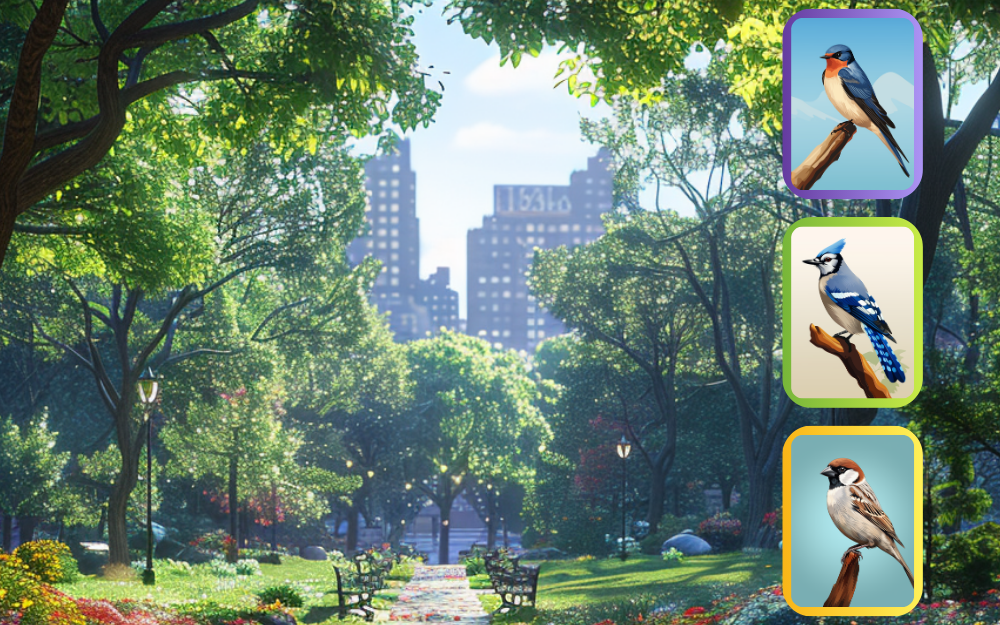When we think of New York City, we often picture its tall buildings and busy streets. But locals know that hidden among all that hustle and bustle are some amazing parks. These natural areas are hideaways for wildlife, especially birds.
To illustrate the rich biodiversity that can be found across the city, let’s have a look at six of the best parks in New York City for birders.
Pelham Bay Park, Bronx:
Pelham Bay Park, located in the northeast corner of the Bronx area of New York City, is a massive natural area spanning over 2 700 acres, three times larger than the more famous Central Park in Manhattan. It features various habitats like forests, wetlands and shoreline, drawing in over 400 bird species. Some birds are easily seen and identified such as many of the large contingent of resident and visiting waterfowl. These including Mallards, American Black Ducks, Buffleheads, Red-breasted Mergansers, Brant, Canada Geese, American Wigeons, Lesser Scaups and Long-tailed Duck
Other species such as the Black-crowned Night-Heron may be harder to find due to secretive habits.
Look up to the sky, especially during migration season for raptors such Ospreys, Red-tailed Hawks and American Kestrels. Owls are often and more easily spotted in winter.
The Greenbelt, Staten Island:
The Greenbelt in Staten Island is a peaceful place away from the busy city. The extensive woodlands and meandering trails are home to lots of different birds, and whether you are a novice or experienced birdwatcher, this park is perfect. There are clear paths, making it accessible to all and easy to navigate.
The Greenbelt, is home to many “urban” nesting birds. These include not only common species such as Downy Woodpecker, European or Common Starling and Northern Cardinal, but also exiting and rarer birds like the Wood Duck, Eastern Screech-Owl, Great Horned Owl, Yellow-billed Cuckoo, Eastern Wood-Pewee and Great Crested Flycatcher.
Freshkills Park, Staten Island:
Once a landfill, Freshkills Park in Staten Island has undergone a remarkable transformation into a vast green space teeming with life. The park is divided into four “mounds,” and each one has a system to collect gases like methane from the waste below.
For bird watchers, this new habitat is great news. Native grasses have been established on the mounds, which has attracted birds that like grassy areas to nest. You might see birds like Ring-necked Pheasants, multiple species of sparrows, meadowlarks, Bobolinks, and if you are lucky, even a rare Sedge Wren.
Van Cortlandt Park, Bronx:
Van Cortlandt Park in the Bronx boasts over 230 bird species, including 60 nesting species. The park’s woodlands and meadows attract many songbirds during the warmer months and during spring and summer, the area is filled with birdsong.
Raptors are best seen during migration, while in the winter, you have the best chance to find owls and potentially rare waterfowl.
Flushing Meadows-Corona Park, Queens:
Flushing Meadows-Corona Park is a popular spot in Queens known for sights like the Unisphere and the Queens Museum. However, should you visit, bring along your binoculars, take your time and do a bit of birding. Many different types of birds can be seen including exiting finds such as Northern Flicker, Eastern Kingbird, Willow Flycatcher, Yellow Warbler and Cedar Waxwing, along with plenty of the much more common Red-winged Blackbirds.
Central Park, Manhattan:
No exploration of New York City’s parks would be complete without mentioning Central Park. This iconic green space in the heart of Manhattan is not only a beloved escape for city dwellers but also a vital habitat for numerous bird species. From resident birds like American Robins and Northern Cardinals to migratory species like Ruby-throated Hummingbirds and the many species of warblers, Central Park offers endless opportunities to find something exiting.
So, whether you’re exploring the woodlands of Pelham Bay Park, the meadows of Freshkills Park or the iconic landscapes of Central Park, you might just find a new lifer in an unexpected urban setting.

